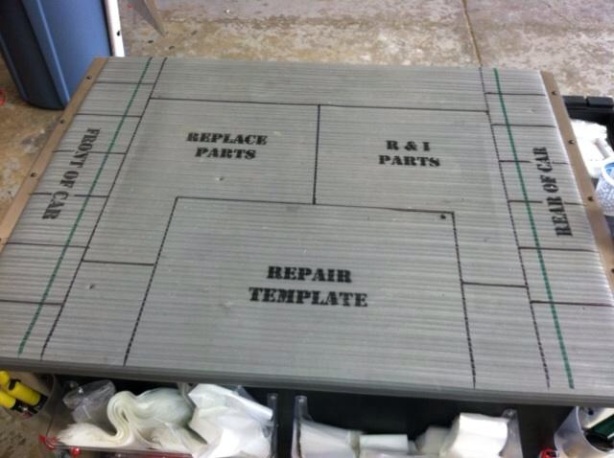If you want to get paid, get organized.
Lean – I spend a lot of time working with shops and I refuse to use the word. It's the most overused buzzword in our industry today. Its what everyone wants to be, what some claim to be and what I'm convinced no one fully understands! Common Sense. Now there is a concept we can wrap our heads around.
Common Sense tells us that our process is broken when the average shop only produces 1.5 flag hours per day, per job across their entire business. Insurance score cards are great, but the numbers rarely represent your entire business performance unless you only do work for one company. (If you do, I'm scared for you.)
I have sat and watched both shop and insurer try to figure out how to fix their problems…In the end mainly by passing the buck around. 80 percent of every process is waste. Documented evidence suggest that the average RO involves 2.5 miles of walking by the sum total of steps involved in the repair process.
Everyone wants to complain about problems, because that is the easiest way to make ourselves feel better about whats wrong with our industry. How many times does the technician walk in the office with a widget and say “boss i need one of these” Why does he have to waste the shops $2 a minute in gross sales to come and tell the office about a $2 part that was missed on the insurance guesstimate most shops blindly work from? Not beating up the insurance people, no one can write a complete sheet without thorough disassembly. The people fixing the car need to be the ones writing the complete repair plan up front instead of figuring it out as we go! A good discovery process visually organizes and identifies everything that is wrong with a car up front. Its way more than piling parts on shiny new parts carts. If its broken or going to break, find that out up front…down to the clip. We cant afford to leave anything to chance, this is the time to identify it all. We all know at some point the job becomes about getting the car out so we just fix the little stuff for free because after a dozen days the customer by now is screaming “When will my car be ready!”
Consider a $2000.00 RO. If we loose $50 in labor or parts what is the impact? If a shop normally net nets 10% (easily do able) the business made $200.00. Now take out the $50 and you've just given away 25% of the reason your in business!
Our industry is being held back by the mass of shops that are fixing cars for practice because they don’t know any other way. Shops that are organized and do a good job with disassembly write better tickets and have better cycle times (cash flow) than the market. As a result these shops have a slightly higher severity than the rest of the market and are unfairly judged against a market full of shops who are unknowingly giving away their thin margin to massive disorganization.
This whole process is feeding consolidation at an unprecedented rate.
I want this blog to be a place for us to solve problems. I believe there is strength in us helping each other because no one has all the answers. If you and the other big shops in your market are into learning and sharing, subscribe to this blog and lets solve problems together.
I may be the only one that feels like this, I hope you’ll see the point here.
Next topic “What do you get paid for?” First up “Prime and block”
Please feel free to post and share here or on our Facebook page. https://m.facebook.com/story.php?story_fbid=1578113362425653&id=1491825211054469



Great article. At my shop we’ve been working hard at getting better at complete disassembly and we’ve seen the benefits almost immediately.
I have one question about the last picture in this post. Is that a board to orangizing clips or something else? Just curious.
LikeLike
Rob, it is our padded disassembly bench top. The goal is to visually organize small pieces during disassembly as r&i or replace. The squares are for like clips and which end of the car they came from, the green square is for broken clips. This way your estimator can walk behind the tech if he is pulled away to catch eveything before it is bagged. We have a disassembly checksheet that guides the repair that goes on the template section. Overkill? Yea…but it enforces and reenforces the process over and over again. I started a few shops on this, most fell away from it, but it sure helped get the process started. Thanks for your feedback. Tim Briggs
LikeLike